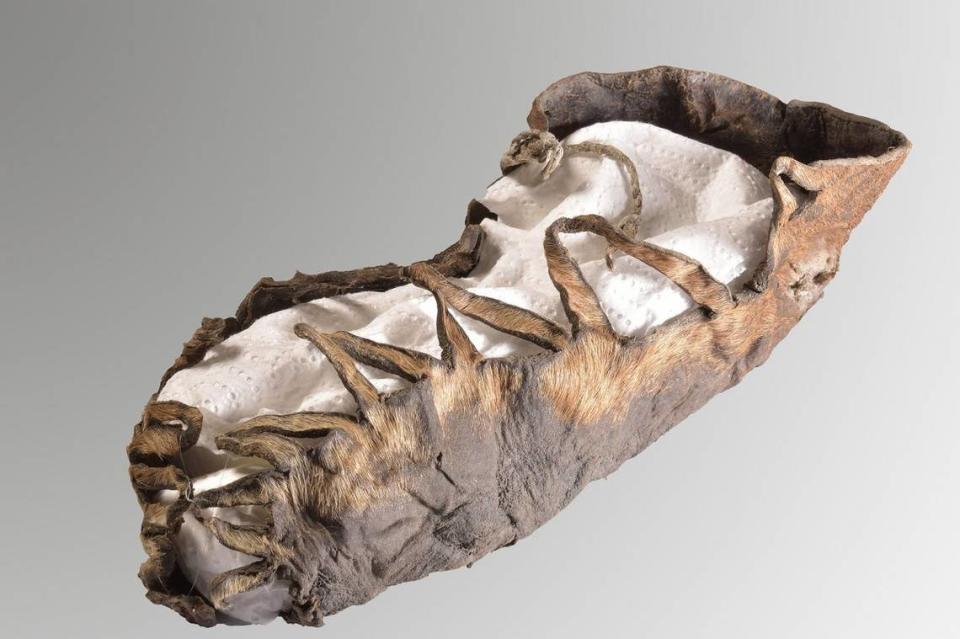2,100-year-old shoe of a child worker unearthed in salt mine in Austria, photos show
Deep underground, an ancient child toiled away in a salt mine. Perhaps their job was to shovel up discarded rocks. Or perhaps they carried precious materials to the surface. Maybe they had a different job entirely.
The only clue they left behind was a 2,100-year-old shoe.
Archaeologists were excavating a tunnel of an Iron Age salt mine in Dürrnberg, Austria, when they found the child’s shoe, according to an Aug. 31 news release from the German Mining Museum.
The small shoe was incredibly well-preserved, photo show. The worn, brown material is open down the center with a series of U-shaped hooks. It almost looks like a modern-day ballet slipper.

The shoe still had remnants of flax or linen laces, the release said. Based on its lace-up pattern and design, archaeologists identified the footwear as being made in the second century B.C.
Archaeologists said the shoe roughly corresponds to a modern European size 30 shoe. In U.S. sizing, this ranges from a kid’s 11 to 12 shoe size, according to conversion charts from Kiwi Sizing and SizeGuide.net. Although these modern sizes are commonly worn by 5-year-old to 6-year-old children, archaeologists did not indicate the child miner’s age.
During previous excavations in the Dürrnberg salt mine, archaeologists found several leather shoes, the release said. Still, children’s shoes are considered special finds because they prove that Iron Age children were present underground.

Near the shoe in the Georgenberg tunnel, archaeologists found half of a wooden shovel blade and some fur with lacing. The material was likely part of a fur hood, the release said. Archaeologists did not specify if or how these artifacts were connected to the shoe.
Organic material — such as those used in the shoe and fur hood — usually decompose over time, head archaeologist Thomas Stoellner said in the release. At the Dürrnberg mine, the natural preserving effect of the salt helps save fabric artifacts that typically don’t survive in other environments.
Excavations in the Georgenberg tunnel are part of a long-term research project in Dürrnberg, the release said. Archaeologists will continue excavating the salt mine to better understand the Iron Age people who once worked there.
.Dürrnberg is about 190 miles west of Vienna and along the Austria-Germany border.
Google Translate was used to translate the news release from the German Mining Museum.
Melting ice reveals remnants of reindeer hunts 1,500 years ago in Norway, photos show
1,100-year-old nose ornament found in Mexico had special purpose, experts say. See it
Mysterious steel sheets found in Pacific Ocean played role in World War II, study says

